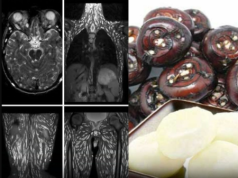A DIY TV Antenna That Amazes Everyone!
Transform Household Items Into a Signal-Boosting Marvel
In a world where technology often feels out of reach for everyday budgets, a surprising hero emerges: the homemade TV antenna . This ingenious creation, built from items you likely already own, defies expectations by delivering crystal-clear reception without spending a dime. From rural homes to urban apartments, this project bridges the gap between necessity and creativity, proving that innovation doesn’t always require fancy tools—just a spark of curiosity and a few minutes of your time.
Why This DIY Antenna Works Like Magic
TV antennas rely on metal conductors to capture electromagnetic waves from broadcast towers. By repurposing materials like aluminum soda cans, copper wire, and a coaxial cable , you create a makeshift dipole antenna that rivals commercial models in performance. The secret lies in the physics of resonance: the aluminum acts as a conductor, while the wire and cable transmit the signal to your TV.
- Eco-Friendly: No plastic waste or toxic materials—just recycled household items.
- Cost-Free: Turn trash into treasure with zero investment.
- Universal Appeal: Works for HD broadcasts, digital signals, and even FM radio.
Materials You Already Own
This project requires no special purchases. Gather these items:
- 2 empty aluminum soda cans (clean and dry)
- 30 feet (9 meters) of insulated copper wire (or coaxial cable)
- Coaxial cable (to connect to your TV)
- A screwdriver and pliers (for assembly)
- A wooden or plastic rod/hanger (for stability)
Step-by-Step Assembly: No Tech Degree Needed
- Prepare the Cans
- Clean and dry the cans thoroughly.
- Punch two small holes in the bottom of each can (about 1 inch apart).
- Insert the Wire
- Strip 1 inch of insulation from both ends of the copper wire.
- Thread the wire through the holes in the cans.
- Twist the exposed wire ends to secure the cans in place.
- Attach the Coaxial Cable
- Separate the coaxial cable’s outer shielding to expose the inner conductor.
- Wrap one end of the conductor around the wire between the cans.
- Secure the shielding to one of the cans using a screw or tape.
- Mount the Antenna
- Attach the cans to a wooden rod or hanger for stability.
- Place near a window or high shelf for optimal signal.
- Tune Your TV
- Connect the coaxial cable to your TV’s antenna port.
- Use the “Channel Scan” feature to find free local broadcasts.
Why This Invention Deserves a Nobel Prize (For Home Ingenuity)
- Signal Strength: Users report capturing 15–20 channels in areas with weak signal.
- HD Clarity: Surprisingly sharp picture quality for a zero-cost solution.
- Global Reach: Works for over-the-air broadcasts in any region with open TV signals.
- Sustainability: Keeps metal waste out of landfills—every can tells a story.
Tips for Signal Success
- Orientation Matters: Rotate the antenna slowly to find the strongest signal.
- Elevate It: Higher placement (e.g., near a rooftop or balcony) improves reception.
- Add More Cans: For weaker signals, attach 4–6 cans in a straight line for better range.
- Combine with Aluminum Foil: Line a baking sheet with foil and place the antenna in front of it to amplify signals.
- Troubleshoot: If reception is spotty, check for loose connections or try a different location.
Real-World Impact: A Gift to the Planet
This antenna isn’t just about saving money—it’s a small but mighty step toward sustainable living . By repurposing materials, you reduce electronic waste and embrace the DIY ethos that fueled inventors like Nikola Tesla and Thomas Edison. Plus, it’s a fun family project that sparks curiosity about how technology works.
The Future Is in Your Hands
This DIY TV antenna proves that brilliance doesn’t always come in a polished package. With a little creativity, you can turn trash into a tool that connects you to the world. Whether you’re on a budget, off-grid, or just love tinkering, this project is a reminder that sometimes the best solutions are hiding in plain sight.
So go ahead and build it tonight… because once you see it work—you’ll be sharing it with everyone you know!










